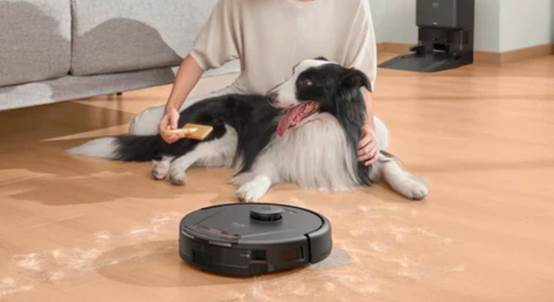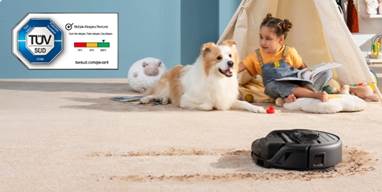Nothing
is more frustrating than spending hours cleaning your home, only to notice
unpleasant smells lingering in the air. Whether it’s the musty scent of hidden
mold, the stubborn odor of pet accidents, or the greasy smell of old food
residue, these persistent aromas can make even the cleanest home feel dirty.
Many people struggle with how to remove dog urine smell from floor, only to
find that the stench returns days later. The truth is, surface cleaning often
isn’t enough—odors can seep into carpets, walls, and even HVAC systems. In this
article, we’ll explore the common causes of lingering smells, how to pinpoint
their sources, and the most effective solutions to keep your home smelling
fresh.

Common Reasons Your House Still Smells After
Cleaning
Hidden Mold and Mildew Growth
One
of the most common yet overlooked causes of persistent odors is mold and
mildew. These fungi thrive in damp, dark spaces like behind walls, under sinks,
or in basements. Even if you clean visible surfaces, spores can remain,
releasing a musty smell that permeates your home. Mold growth is often
triggered by leaks, poor ventilation, or high humidity. If you notice a damp,
earthy odor, inspect areas prone to moisture buildup. A thorough cleaning with
specialized solutions—or even professional remediation—may be necessary to
fully eliminate the problem. Ignoring mold not only worsens smells but can also
lead to health issues over time.
Lingering Pet Odors and Dander
Pet
owners know the struggle of dealing with stubborn animal smells. Urine, dander,
and even pet bedding can leave behind odors that regular cleaning won’t fully
remove. For example, if you’ve wondered how to remove dog urine smell from floor, you might have tried mopping with
standard cleaners, only for the scent to return. That’s because urine can seep
into grout, floorboards, or carpet padding. Enzymatic cleaners are often the
best solution, as they break down odor-causing bacteria rather than just
masking the smell. Additionally, frequent vacuuming and washing pet bedding can
help minimize lingering pet odors.

Trapped Food and Grease Residue
Old
food particles and grease buildup in kitchens can create surprisingly
persistent smells. Even if you wipe down counters daily, tiny food remnants
might hide in garbage disposals, behind appliances, or inside cabinets. Over
time, these residues attract bacteria, leading to unpleasant odors. Deep
cleaning appliances, degreasing range hoods, and regularly emptying trash bins
can help. Pay special attention to hidden spots like under the fridge or inside
the oven—these areas often harbor forgotten spills that contribute to bad
smells.
Poor Ventilation and Stale Air
Sometimes,
the issue isn’t dirt or mold—it’s simply stale air. Homes with poor ventilation
trap odors inside, making them more noticeable. Cooking fumes, laundry smells,
and even cleaning product fragrances can linger if there’s no airflow. Opening
windows regularly, using exhaust fans, or investing in an air purifier can
significantly improve indoor air quality. If your home feels stuffy despite
cleaning, improving ventilation should be a top priority.
How to Identify the Source of Persistent Odors
Finding
the exact source of a bad smell can feel like detective work. Start by
narrowing down the location—does the odor seem strongest in the kitchen,
bathroom, or near the pet’s favorite spot? Sniff-test carpets, furniture, and
air vents to see if the smell intensifies. For mold, check for damp spots or
discoloration on walls. If pet odors are the issue, a blacklight can reveal
hidden urine stains. Sometimes, the culprit is unexpected, like a forgotten
spill inside a closet or a clogged drain. Taking a systematic approach will
help you target the problem effectively.
Effective Solutions to Eliminate Stubborn Household
Smells
Deep Cleaning Techniques for Odor Removal
Superficial
cleaning often misses the deeper sources of odors. For carpets, steam cleaning
can extract embedded dirt and bacteria. Hard floors may need scrubbing with
specialized cleaners, especially in grout lines where smells hide. Don’t forget
walls and ceilings—they can absorb cooking fumes and pet odors over time. A
mixture of vinegar and water works well for wiping down painted surfaces. For
upholstery, sprinkle baking soda before vacuuming to neutralize smells. Deep
cleaning takes effort but ensures odors don’t return quickly.
Natural Remedies vs. Chemical Cleaners
Many
people prefer natural solutions like baking soda, vinegar, or essential oils
for odor removal. These options are eco-friendly and safe for households with
kids or pets. Baking soda absorbs smells in refrigerators and carpets, while
vinegar’s acidity breaks down bacteria. However, for severe cases (like mold or
pet urine), stronger enzymatic or chemical cleaners may be necessary. Always
test a small area first to avoid damage and ensure proper ventilation when
using harsh chemicals.
Improving Air Circulation and Using Air Purifiers
Even
after deep cleaning, maintaining fresh air is key. Open windows daily to allow
cross-ventilation, and use fans to circulate air. Air purifiers with HEPA
filters capture dust, dander, and odor particles, making a noticeable
difference. For musty spaces like basements, a dehumidifier can prevent mold
growth. Simple habits like removing shoes indoors and regularly changing HVAC
filters also contribute to long-term freshness.
Conclusion
Eliminating
stubborn household odors requires more than just surface cleaning—it’s about
addressing hidden sources and maintaining a consistent routine. Whether you’re
battling pet smells, mold, or trapped cooking odors, the right techniques can
restore freshness to your home. For those tough cleaning challenges,
high-quality tools make all the difference. eufy’s cleaning products, for
example, are known for their exceptional performance and powerful
functionality, helping you tackle even the most stubborn messes with ease. By
combining deep-cleaning methods with the right tools, you can enjoy a home that
smells as clean as it looks—every single day.
